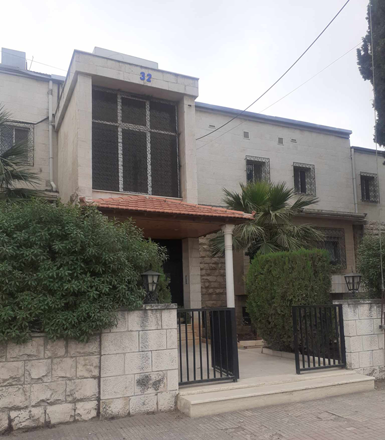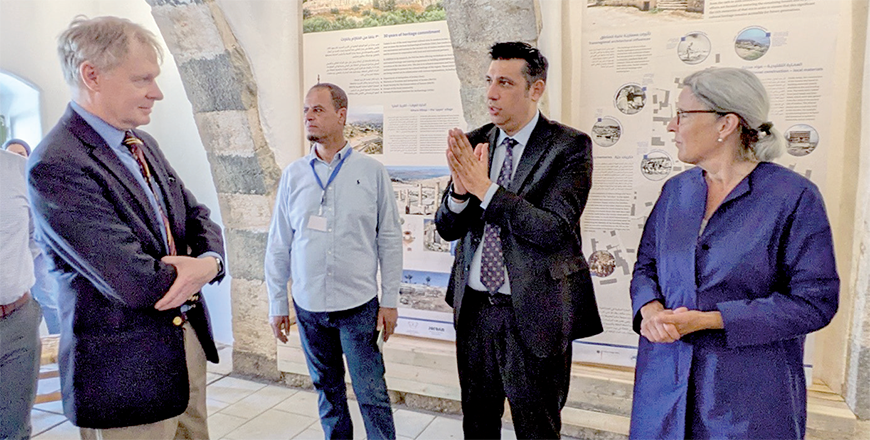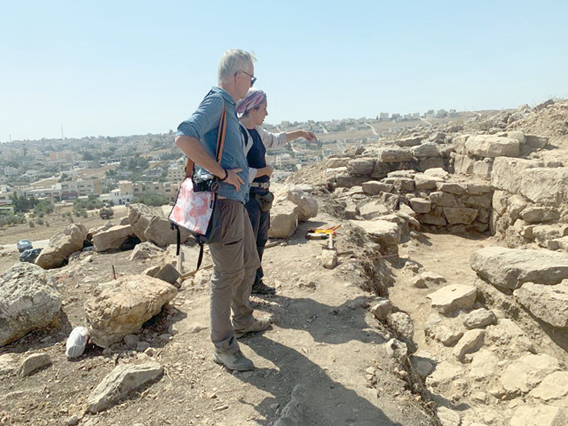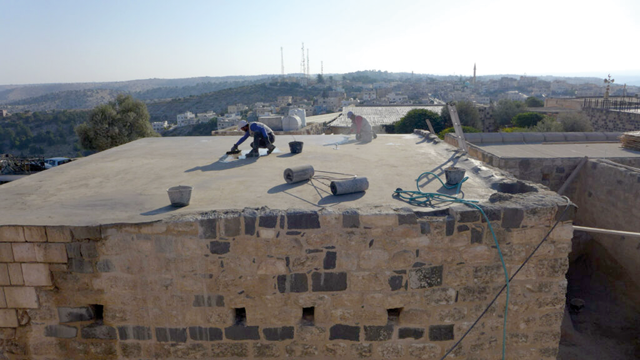You are here
German Protestant Institute for Archaeology: A hub for scholarly pursuits in Amman
By Saeb Rawashdeh - Nov 15,2023 - Last updated at Dec 24,2023

The German Protestant Institute of Archaeology in Amman is a research centre that operates for approximately 50 years without interruption and gathers academics and scholars from Jordan and abroad (Photo of Saeb Rawashdeh)
AMMAN — German intellectual presence in the southern Levant dates back to the late 18th early 19th century when the first orientalists, historians, philologists and travellers reached the Holy Land. During that period different European powers would send experts to explore the region. German Orientalism was motivated by the intellectual pursuit for knowledge as well as development of scholarly disciplines.
The German Protestant Institute for Archaeology (GPIA) in the Holy Land was established in 1900 by the German Emperor William II who was interested in the heritage of the Middle East. In 1975 the GPIA was founded in Amman, and it became a hub for German, Jordanian and international researchers.
“I came for the first time in Jordan in 1992, as a student, and instantly fell in love with the country,” noted Director of the GPIA Brita Jansen, adding that when the opportunity emerged, she immediately applied for archaeological projects in Jordan.
Jansen’s first exposure with the Jordan’s archeological heritage was in Umm Qais where she was a part of a team from the German Archaeological Institute (DAI).
“From then I’d come nearly every year and I worked with the DAI and the GPIA,” Jansen said, noting that she excavated Umm Qais fortifications.
Until 2008, she frequently dug in Umm Qais while in 2019 Jansen joined the project run by the Department of Antiquities (DoA) and the GPIA at Tell Zara’a.
“In the field of archaeology we started cooperation with the University of Kiel, which works on the Roman-age peristyle courtyard monument in Umm Qais,” Jansen said, “It was excavated by the DoA.”
The Umm Qais project is studying the later periods of the occupation in the post-Roman period, Jansen said. The Tell Zara’a project is finished so the major focus is on the Islamic Umm Qais.
“The UNESCO is our partner in a project regarding mosaic in the bath at Umm Qais. The mosaic needs to be covered and protected from elements,” Jansen underlined, noting that another ongoing project includes the DoA and archaeological museums in Jordan.
Restoration of the Ottoman village in Umm Qais is another objective of the GPIA, which was the project started by Professor Emeritus Thomas Weber in 1980.
“Our relations with the DoA are particularly important and successful, and it started 50 years ago. We are very grateful for the trust that we get from the DoA,” Jansen said.
Related Articles
AMMAN — After years of joint efforts between the Department of Antiquities (DoA) and the German Archaeological Institute in Berlin (DAI), th
AMMAN — Since its establishment of a branch of the German Protestant Institute of Archaeology [GPIA] in Amman in 1975, the GPIA has de
AMMAN — The collaboration between the Department of Antiquities (DoA) and the German Archaeological Institute (DAI) has extended its i














